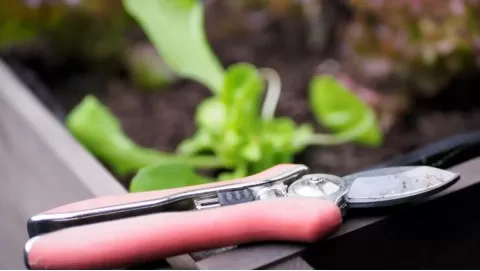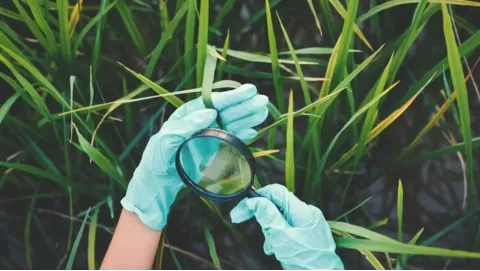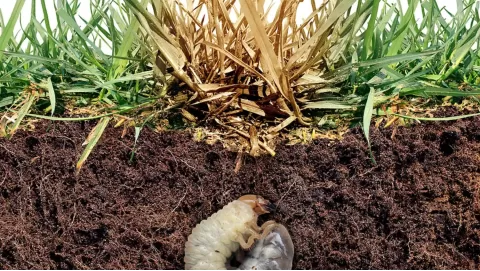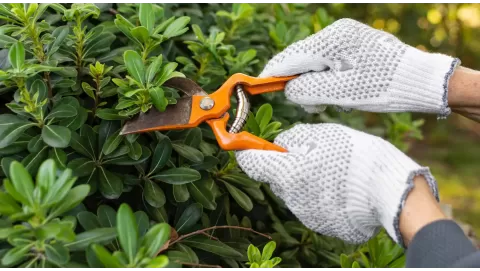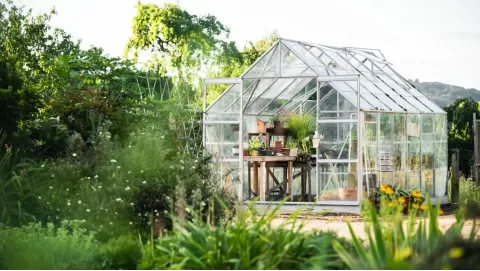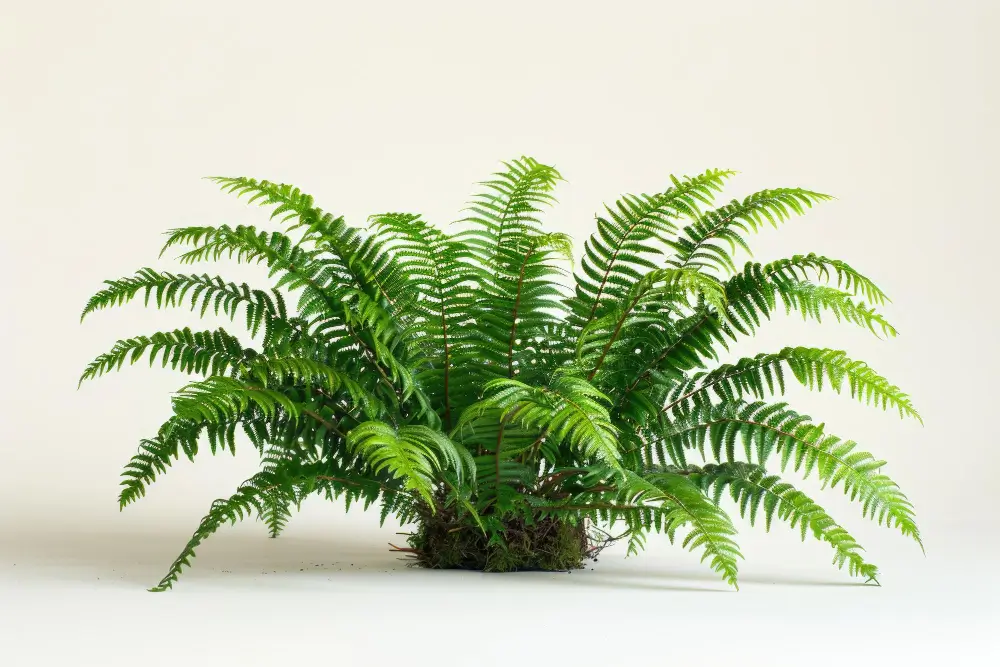
Boston fern care: How to maintain lush nephrolepis
The Boston fern, Nephrolepis exaltata, is a unique option for houseplant enthusiasts due to its graceful, arching fronds and lush, green leaves. These ferns have an ancient pedigree. They gained popularity in the Victorian era and are still frequently found on porches in the South and growing in pots in elegant homes.
The Boston fern is not an easy houseplant to care for. They bear fragile flowers that open only in certain conditions. Boston ferns are very sensitive to their environment, so what does the trick in one home may not work well in another. These plants require continually wet soil, abundant bright filtered light, and high humidity levels to maintain a healthy look. Even though the instructions seem simple enough, they demand careful attention to detail.
Despite the challenges with indoor growing, avocados are certainly rewarding. With a little care, these ferns make any place a green oasis. So if one wants to take good care of this healthy and beautiful plant, one must first become familiar with its special needs.
To get the best out of Boston ferns, gardeners must follow several steps to success. Growcycle has various gardening necessities, including special potting mixes for moisture retention and humidity trays to create perfect conditions for thriving Boston ferns. Whether you’re a year-round gardener or just starting out, Growcycle makes sure every single Boston fern gets the care it needs to grow strong.
History of the Boston Fern
It was first detected as a spontaneous mutation in a consignment of Nephrolepis exaltata ferns from Philadelphia to Boston in 1894. The Boston fern is native to various tropical countries and grows well in warm, moist climates, including Central and South America, the West Indies, Polynesia, and Africa. It thrives in damp areas around swamps, forest floors, and floodplains.
These tropical environments offer constant moisture and heat, which the Boston fern enjoys. Since it enjoys humidity and shade, it’s also a popular indoor plant pick that can replicate those conditions. Homeowners want to understand where the Boston fern comes from, in order to do everything possible to ensure they have the best indoor situation for a healthy one.
Related: Live plants
Botanical Facts of Boston Fern
Boston fern is a very trendy indoor plant that can make the environment fresh and green. It has alternate common names like Sword Fern for the shape of the lovely green, shiny leaves. Standing 1 metre high, it will easily fit in homes all year round.
Just like with flowers, Boston ferns are too attractive, but not due to the flowers but to their lush foliage, which is what makes it attractive. The optimum is a very bright shade with some hours of direct sun. So they do have to live inside a house, but should dwell in shaded areas. This implies that these plants will do quite well in average indoor temperatures of between 70°F and 90°F.
Boston ferns prefer soil that is slightly acidic and well-draining. Watering needs to be frequent but intermittent, so as not to get the soil soggy wet but still keep the soil constantly moist. Homemade feeds can also help increase nutrient levels in the fern.
Essential Care Tips to Thrive Boston Fern
Here are some key tips to help keep any boston fern looking lush and beautiful, whether one is a plant expert, or just beginning:
Light Requirements
When it comes to light requirements, Boston ferns would like to make their home in partial shade. This refers to the fact that they grow better in shade than they do in the full sun of an open location. This plant is best placed near a window that gets filtered light or in an area with partial shade. Any room that gets a good amount of bright and indirect sunlight will be just perfect for these sorts of ferns.
Without light, a Boston fern might struggle to perform photosynthesis, a key process for its growth. Starvation for want of adequate light can result in a weak plant with pale or yellowing leaves. This may result in little wiry ferns throughout the plant. With sufficient light, the Boston fern will remain full and green indoors.
Watering
Boston ferns can be exacting when it comes to soil moisture. The trick is to not over-water and under-water the plant, as the two extremes can potentially harm the plant. The potting mixture needs to be consistently checked and not watered unless the soil feels dry to the touch for those seeking the right balance of moisture.
The best time to water a Boston fern is when the upper inch of soil becomes somewhat dry. These are ferns that prefer their soil to be consistently moist but not soggy. If the soil feels dry to the touch, add some water to the plant.
But occasional neglect in watering is something these plants can survive; at best, they require constant wetting. The fern’s condition may worsen if ignored for too long, although a few cases have been reported where it lasted even without watering.
Nutrition
Feeding Boston ferns is pretty easy since they don’t need a whole lot of fertilizer. But it’s sometimes beneficial to fertilize them to make them look more vibrant and encourage further growth. It may be fertilized with liquid plant food for good nutrition during the spring and summer months.
Use this manure once every 4-6 weeks, and it will provide vital nutrients for faster growth and a more filled-out appearance. However, even though ferns generally prefer minimal fertilizers, giving them a little boost with this nutrient boost can improve the wellness and appearance of the fern.
Temperature & Humidity
A Boston fern requires the right heat and moisture to thrive. The optimal temperature for Boston ferns is anything between 65-75°F which is ideal for ensuring that they stay healthy and thriving. Also, this plant needs humidity. They like high humidity; anything between 50–80% humidity is preferable. These plants can also take lower humidity levels down to 30% for a while without harm if it isn’t for an extended period of time.
Insufficient humidity can cause leaves to brown, which stifles ferns' growth and makes them more susceptible to insects and diseases. Fern growth requires an ideal indoor environment that has high humidity.
So clearly, a nice place for a Boston fern would be in a bathroom. It is more humid than the rest of the house, and that’s something this plant does best of all. But the plant should be shielded from air conditioning vents or radiators that blow hot air because these dry out the air, which can harm the fern.
Soil & Repotting
In order to ensure healthy, fast-growing Boston ferns for your home, they need to be potted in the correct soil and receive frequent repotting. It's a good idea to repot these ferns annually or every other year, or when their roots become too crowded and the plant won't stand in the pot unless you push it down into the soil surface. If you do repot, the plant will have more space to grow and some fresh soil.
The perfect Boston fern soil should be porous and have little to no problem draining. It allows for the drainage of excess water in the pot, which prevents waterlogging and root rot. Therefore, it is recommended to use an organic potting mix consisting of grains of perlite, which improves soil aeration and drainage and creates optimal conditions for the fern's roots.
For repotting, always pick a pot slightly larger than the last, creating some room for the plant to grow. So then simply slide the fern from its old pot, tease out any compacted roots, and drop it into another new, soiled pot. Make sure the plant stays watered after repotting and keep an eye on it for signs of plant stress.
Boston Fern Propagation
Boston ferns can be propagated easily in spring, particularly when repotting. This method can also help to grow new plants and extend indoor gardens.
Firstly, clean pruner should be used to gently snip a small frond that is hiding right next to the main stem. Keep these tools clean, both before and after each use. This is to avoid the transmission of diseases or pests to the plant.
Once cut, cuttings should be planted in a pot of well-drained cutting soil. Keep the soil moist, not wet. In the meantime, continue keeping the pot in indirect light to encourage healthy growth for the cuttings while it is protected from direct sun or extreme temperatures.
In a couple of weeks, a young Boston fern will root. One day, it will make a nice houseplant for everyone to have in their homes. If you love it, then reproducing Boston ferns is a simple and fun thing to do, this way you can get more of this plant in your own home too; because they are indeed, they are very lovely.
Related: Queen of the Night Flower care: Growing epiphyllum oxypetalum indoors
Types Of Boston Fern
There are a couple of different types of Boston ferns, and all have their own attributes and care requirements. Understanding the differences can help people who want to select the best fern for their space.
1. Compacta
This one has a straight-up growth habit overall and a tidier nature than other Boston ferns. It also works better at high temperatures and low humidity, so you don’t have to have it somewhere that’s always and perpetually damp.
2. Fluffy Ruffles
This is a ruffled Fern, meaning it has tighter, thicker fronds, making it look more full-bodied than the traditional Boston Fern. The fronds are shorter and more tightly curled. It is also generally smaller than the ubiquitous Boston fern, making it perfect for tighter spaces.
3. Golden Boston
The Golden Boston has an easily recognisable yellow fronds. It’s a plant you can be a bit flexible with, too – you can grow it outside in pots once it has grown up a bit, but bring it in for winter. You can always bring it back outside once it gets warm again.
4. Rita’s Gold
'“Rita’s Gold” is also a lighter option with its bright yellow-green leaves that will illuminate any area. It’s a bit more temperamental, and it requires bright, indirect light if you want to maintain its color. It’s a medium-sized plant and has a tender, gentle look.
5. Fluffy Duffy
This variety has delicate, feathery fronds, making it perfect for hanging baskets. ‘Fluffy Duffy' remains lush and green with regular misting year-round, helping it maintain its full look.
How to Grow Boston Ferns from Seed?
Boston ferns can be a joy to grow from seed, with a little caution that goes a long way.
- Preparing the Soil
Begin by choosing a good, well-drained, moist soil for the fern. Keep the area where ferns grow free of noxious weeds, for they will compete with ferns for nutrients and space. It is also important to remove stones or litter in the soil. Do not use pesticides as these can affect the undergrowth of fern and other useful organisms.
- Planting the Seeds
Once the soil has been prepared, make holes about 6 inches deep. Drop one seed into each hole, then carefully cover the hole with a bit of soil around each new plant. This will keep the water in so that your seedlings don’t float away when you come to water them later.
- Watering and Care
Soon after planting, the ground should remain moist without being too soaked. Daily misting of the soil helps maintain its moisture level. Within about three weeks, tiny white leaves should begin to emerge from the soil. These young plants will continue growing until they are strong enough to be transplanted outdoors.
- Soil Mix for Better Growth
If soil is hard to find, consider half composted manure and half peat moss. Peat moss will help retain moisture, and the composted manure gives the fern essential nutrients to grow.
Key Benefits of Boston Fern
The Boston fern isn’t just a pretty plant to keep in the house. It has numerous benefits that make it a popular selection for indoor areas.
Natural Air Purifier
One of the best things about this fern is that it is naturally an air purifier. This aids in eliminating harmful substances from the environment, thus the atmosphere becomes cleaner and healthier. This makes them ideal for rooms that could do with a bit of fresh air and ensures that they play a part in helping to improve indoor air quality.
Humidity Control
Boston ferns are also excellent at regulating humidity levels. Dry indoor atmospheres maintain humidity by releasing moisture into the air, which can be very helpful. It may alleviate some issues associated with dry indoor air, such as skin dryness or irritation of the nose and throat; so in addition to making your home look better, putting plants indoors would make them feel better.
Safety for Kids and Pets
Boston ferns are nontoxic to kids and pets, which makes them ideal for homes with children and furry friends. That means people who keep them can still appreciate the beauty and benefits of these ferns without worrying that they can do harm to their family and pets.
Easy to Grow Indoors
Boston ferns are some of the most common house plants because of their easy-growing habits. They like indirect light and require very little water to keep the soil moist. These ferns have no problem adjusting to the average temperature that is common in homes, thus making them great indoor plants.
However, it is crucial to note that keeping a Boston fern indoors requires careful attention to humidity conditions. So, you must maintain an adequate level of moisture in the house air to ensure these kinds of ferns look lush and healthy as they thrive in a humid environment, like Boston ferns do.
Remove Harmful Toxins
Not only are Boston ferns pretty houseplants, but they can also remove toxins, including formaldehyde, that can be emitted from things around the house, including furniture, plastics, and cigarette smoke. This plant can potentially keep living spaces clean.
Common Problems and Solutions to Thrive Boston Fern
Common pests that can infest a Boston fern, especially when grown outdoors, are whiteflies, mealybugs, and chewing insects such as snails, slugs, and caterpillars. These pests may cause severe damage by making holes in the leaves and leaving a sticky residue.
Too much watering might cause root rot, which is another serious issue. The presence of gray fronds and brown roots suggests that root rot has occurred. This means that the roots must have good drainage and ventilation to remain free from diseases like this and rots.
To keep a healthy fern plant without any rotten parts, it’s vital to ensure enough drainage openings on the bottom of the pot where it is growing. Growers need to consistently check for bugs and provide proper watering if they want their Boston fern to be alive and healthy.
FAQs
Where to keep Boston ferns?
Boston ferns, naturally occurring in subtropical areas, are fond of moist and sunny environments. The best location for a Boston fern is a damp bathroom, which can benefit from the humidity. They can also grow well in bedrooms, bringing some greenery to the room while people sleep.
Are Boston ferns safe for cats and dogs?
Yes! Boston ferns do not harm cats and dogs. It is not necessary to worry about poisoning in case a pet chews on the leaves of this plant.
What type of soil is best for Boston ferns?
The perfect Boston fern soil mixture is Coconut coir or compost and perlite, sand, or vermiculite. This combination helps to keep the soil slightly acidic while providing sufficient water drainage and retaining enough moisture for healthy fern growth.
The Bottom Line
Boston fern is a lovely plant that can brighten up just about any indoor space with its greenery and graceful appearance. These ferns do best in indirect sunlight, in conditions that are moist and humid. Providing the right light, water, and a good soil mix, anyone can learn how to keep their Boston fern looking lush and beautiful. Its natural air cleaning properties, child and pet friendliness, and easy care make it a go-to option for lovers of plant life.
With the right tools, products, and care tips, anyone can successfully grow and enjoy the benefits of this timeless houseplant. These include gardening supplies available at Growcycle, which are necessary for creating a suitable environment for Boston ferns. Among these supplies are high-standard potting mixes, humidity trays, and plant misters, which are necessary to thrive Boston ferns.
Disclaimer: Information in this material should not be taken as advice from legal, medical, financial, or any other form of professional advice.



